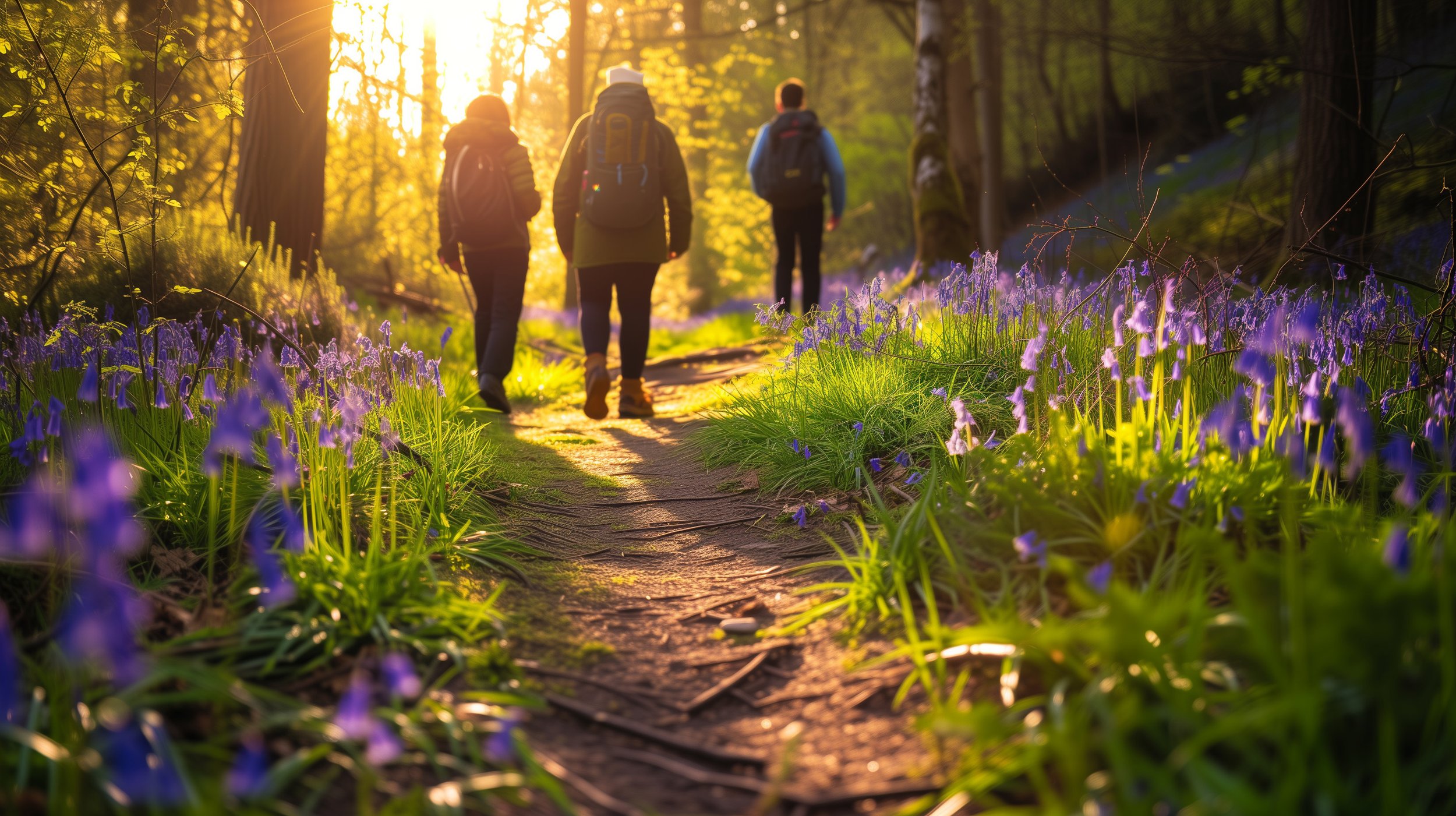Sarah's Health Notes: Walking back to happiness
Yesterday morning was a bit stress-y. It started off with oversleeping because I’d woken up with a jolt in the small hours with my brain furiously trying to work out a problem. One option was to rush down to my office at the bottom of the garden and get stuck into work. The other? To go for a walk with my husband and dog in the nearby Wild Wood, look at the bluebells carpeting the ground, listen to the birds singing their hearts out, feel the cool of the trees (‘forest bathing’), inhale the aromas of pine and damp earth, and b-r-e-a-t-h-e...
So I calmed down, my head cleared, I was able to prioritise what I had to do (the washing came bottom of the list I’m afraid…), and actually enjoy the day.
Walking has often been seen as a poor relation in the exercise stakes. But as GP Dr. William Bird says, ‘the combination of non-competitive physical activity and nature is comforting and restorative, proven to benefit our mental and physical health’. Or, as Jo and I wrote in our second book Feel Fab Forever, ‘when you’re feeling blue, walking can put you back in the pink’…
A wood is not essential: any green or blue (river, sea, lake etc) space is perfect. As Dr. Bird, an early passionate advocate of the power of nature to benefit health, explains: ‘it goes straight to the autonomic nervous system (ANS). While hard unyielding shapes and surfaces cause a stress response in the ANS – “there’s something wrong here” – when we go back into natural surroundings, everything shifts round and the brain de-stresses and feels safe again’.
Walking around our very rural neighbourhood, we often meet others, with and without dogs, and there’s also a walking group. Ramblers Association UK, the original walking group, was launched on New Years Day 1935, with the aim of keeping the countryside open to everyone, and now has over 500 local groups. Interestingly, searches for local walking groups rose across the board after lockdown, with new ones sprouting around the country.
Nowadays, a new younger cohort of walkers is striding out, not just to keep footpaths open (vital though that is) or as a step counting exercise (also a good thing), but because they find that walking is good for their mental health. In a recent survey of 2,000 people by Opinium, 73% of 18-34 year olds said they found it easier to talk about mental health while out in nature and the same number said it helped with loneliness (now acknowledged as a prime driver of mental health problems with one in four adults saying they feel lonely often or always, according to the Office for National Statistics in January 2025).
Compared to working out in the gym or other indoor activities, walking is affordable, mostly free, and accessible. Plus, according to Hayley Jarvis, head of Physical Activity at Mind, ‘walking groups can help us to build social connections and social support, [which] can reduce loneliness, improve our self-esteem and provide a sense of motivation. The colours, sounds and smells we find outdoors stimulate our senses in a different way and can boost our mood.’
In terms of general physical health, the benefits of walking are multiple:
Walking helps stabilise blood sugar levels, so you avoid swings in mood and energy
It’s weight-bearing exercise, so helps fight osteoporosis
People who combine exercise with healthy eating are more likely to maintain weight loss than those who only diet
Walking regularly builds endurance in the large muscle groups that stabilise and support the spine, helping to prevent (and even cure) back pain
It’s great for strengthening the heart, making it pump blood more efficiently through the body and raising the level of ‘good’ cholesterol
Walking regularly can even help to improve your reaction time – in tests, it’s been shown that not only do walkers’ muscles work better – so do their minds.
A last word: do wear properly supportive, well-fitting shoes please. (I love Fitflops and so does Jo, who has them in styles spanning lace-ups to summer sandals and winter boots.) If you’re not properly shod, your feet and back may hurt and all that exercise will count for little or nothing.


